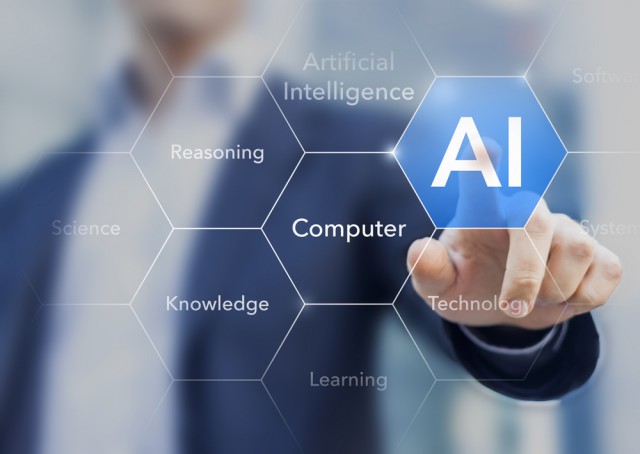
Identifying cybersecurity issues in your business
Threats to your business come in many forms. For most organizations, the biggest threats to their survival are related to cybersecurity. An Allianz survey found this to be true, as "cyber incidents" ranked as the biggest risk to organizations, overtaking "business interruption". Whether those threats are external or internal, they are continuous and evolving because of the ever-increasing shift towards digital.
Over 98 percent of UK security professionals have reported an increase in cyber-attacks against their businesses in the past year. A further 96 percent say those attacks have become more sophisticated. This shows the need for constantly-evolving UK cybersecurity.

Composability is key to a successful hyper-automation strategy
The past two years have been filled with business uncertainty and risk. But for anyone hoping that a post-COVID era would herald a return to business-as-usual, recent months have been a rude awakening. Economic uncertainty is sweeping the Western world, impacting both businesses and consumers. This in turn is driving boardrooms to focus relentlessly on driving greater cost savings and productivity increases across their operations.
Automation is an obvious candidate for achieving both, but existing technology stacks are limiting the speed at which IT teams can harness those capabilities to meet the demands of the business. IT leaders must lead the charge in finding and adopting new strategies to overcome these barriers.

Five ways AI can influence and transform your business processes
Technology is constantly changing the way we work, and automation is something business owners will be keeping an eye on in the future. This is definitely the case with artificial intelligence, with the global market for AI predicted to reach $267 billion by 2027.
Film and media have warned us that if AI becomes too intelligent, it will take over, and these concerns have fed into real-life fears about technology replacing humans. One study found that around 68.5 percent of college graduates thought that technology would render them useless or lose their job to it in the near future. However, AI can aid human connections and collaborations and benefit the world of business.

Is Zero Trust segmentation the answer to mitigating ransomware threats?
As companies increasingly move towards hybrid cloud infrastructures, fostering hyperconnectivity across applications, systems, and users, ongoing digital transformation projects are breeding complexity for modern enterprises. This is one of the reasons why devastating ransomware attacks are at an all-time high. Research by ESG found that 76 percent of IT and security professionals experienced at least one ransomware attack in the past year. What’s worse, 82 percent of the victims paid the ransom, with the average payout reaching $495,000.
In most cases, the fear of downtime and critical data loss drives the decision to pay the ransom. However, payouts are rarely the best long-term solution to combat this problem. Instead, businesses should focus on containing attacks and minimizing resulting business damage proactively. And one of the best ways to reach both outcomes, while bolstering business resilience, is with a modern Zero Trust approach to cybersecurity.

Lateral movement: A crash course
Despite the fact lateral movement has been a frequent factor in security breaches for years, attackers still use it in the vast majority of cyber-attacks. Moving across cloud and on-premises applications and services -- threat actors escalate their way to often unprotected core technical assets -- dropping ransomware, stealing data, poisoning the supply chain and more.
Organizations must start thinking more broadly and implementing solutions to proactively detect and prevent lateral movement attacks in real-time.

Smart helmets: Is technology the future of cycling safety?
Many people might consider helmets unnecessary or a burden. While not every country has set regulations about helmet use while cycling, one thing is for sure: a cycling helmet can save lives.
According to the World Health Organization's Global Status Report on Road Safety 2018, correct helmet usage leads to a 69 percent reduction in the risk of head injuries and a 42 percent reduction in the risk of fatal injuries. With advancements in technology, we now have better, smarter, and more efficient helmets that take safety to the next level while equipping you with a cutting-edge fashion statement.

How enterprises are prioritizing digital resiliency
Today’s enterprises have faced a higher pace of change over the last few years, as existing digital transformation strategies were catalyzed by the disruption of a global pandemic that restricted in-person working. The pressures on enterprises to fast-track IT strategies whilst reckoning with increased cyber risk and the competitive need to match other enterprises’ digital transformation has created many challenges for enterprises in maintaining an IT infrastructure that is both resilient and secure.
Overall, this has been a successful endeavor, and many enterprises transformation strategies are well underway.

How can digitization and data make the generation of electricity more efficient and sustainable?
The UK’s energy industry is in uncharted waters, and it is being impacted by conflicting forces which are above and below the waterline. Firstly, prices are rising at levels unseen in a generation, and are only predicted to increase further -- this is having a knock-on impact on the economy and the consumer wallet. Secondly, from a sustainable perspective, it is clear that more must be done, and more quickly, to both protect the planet and achieve the UK’s Net Zero targets.
Other industries have had their digital moments, but the digitization of the UK energy industry is only at the start of its journey. Can digitization and data in particular be used to reduce electricity prices and also increase sustainability? I really think so. Let’s consider just one part of the problem and examine how digitization and data could be applied to drive efficiencies in the balancing of the National Grid.

Bullzip PDF Printer 14 makes it even easier to create PDFs from just about any application
While Microsoft has made it so much easier to create PDF files in Windows than it ever used to be, the built-in option is still rather limited. You can use Microsoft's virtual PDF printer to quickly convert images, Office documents and other files into the ever-useful PDF format, but there are not a huge number of options that you are able to configure.
Things are rather different with Bullzip PDF Printer which has just been updated to version 14. It is a while since this versatile tool received an update, so it's great to see that it has not been forgotten and that development is on-going. Whether you're a new or existing user, there is a lot to look forward to in Bullzip PDF Printer 14.

The evolution of botnets and DDoS attacks
Distributed Denial of Service (DDoS) attacks have become an ongoing threat for organizations. Using a variety of techniques, a wide range of threat actors from lone hackers, criminal gangs and hacktivists to nation-states are using DDoS attacks to disrupt or disable the performance of target systems. These targets can be small or large businesses, internet service providers, manufacturers, retailers, healthcare providers, schools and universities, or other nation-states. Essentially, any entity with an online presence can become a DDoS target.
Now, here is the why. There are three main reasons why people create botnets: For financial gain by extortion -- 'pay up or we keep attacking’; to make a point -- 'stop (or start) doing something or we continue’; or, in the case of nation-state actors, as an espionage or cyber warfare tactic.

Implementing international regulations from a tech perspective: Lessons from the Union Customs Code and Brexit
The issue of border management is a hot topic that has gathered urgency due to the combined impact of the pandemic, trade and travel sanctions related to Russia, with regards to the Ukraine conflict and global supply chain disruption. Borders play a critical role in managing security, public health and safety, and commerce between nations.
The issue is highly political, as evidenced during Brexit negotiations, when one of the major sticking points -- still a contentious issue today -- was around implementing the necessary customs regulations between Northern Ireland and Ireland in the absence of a hard border between the countries. A common theme among government communications at the time was that a "technological solution" would be capable of tracking goods and ensuring the correct declarations and authorizations were made, without requiring physical checks.

Three of the world's most expensive phishing attacks and how they could have been prevented
A number of high-profile cyber-attacks in 2021 thrust cybersecurity back into the spotlight. In light of the HAFNIUM hack, cybersecurity has become a major focus for many businesses. Although the hack itself was not the result of human error, it was a wake-up call for organizations to make sure they were fully protected.
The Department for DCMS' Cyber Security Breaches Survey 2021 revealed that phishing is still the most common cause of cybersecurity breaches, accounting for 83 percent of all successful attacks.

6 FinTech trends that will dominate the industry in 2022
2022 may have started as the year of blockchain technologies and NFTs, but since March, the crypto market has seen a major dip.
However, despite the cooling of crypto, some trends have continued to flourish throughout the middle of the year. This article will discuss the six FinTech trends we believe will boom in 2022.

CIO's guide to flexibility in the hybrid world: Growing the tech talent to stay competitive
When the business history of the 21st century’s first great pandemic is written, CIOs will emerge as resourceful heroes who executed digital transformation at speed, achieving remarkable success in enabling their organizations to function with suddenly dispersed workforces, and do it fast.
But that was then.

How telematics and technology's 'hive minds' are saving the humble bee
You may well not be aware, but every year on July 10th the world observes Don’t Step On A Bee day. It’s a simple, sensible suggestion (!) but the true meaning behind it is to raise awareness of the fact that the fate of the humble bumblebee hangs in the balance.
Given the way we’ve anthropomorphized bees into cutesy little flying honey makers, you might be surprised to learn just how vital bees are to our ecosystems. In the human world, technology is underpinning our ecosystems, and telematics is the root technology empowering change and making us all bee-have a little more organized.

